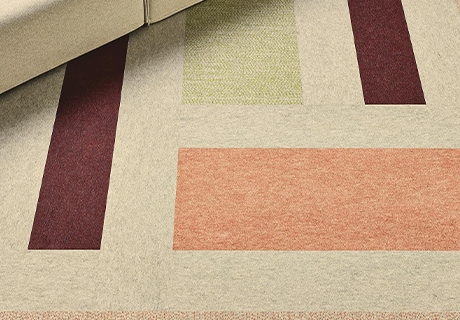The HCD 10: Edwin Beltran, Interior Designer
Holding a Bachelor of Environmental Design from the University of Puerto Rico and Master of Architecture from The Ohio State University, Edwin Beltran says he sees interior design as a “selfless and optimistic quest to create meaning through beauty.” He’s been on that journey for more than two decades, joining NBBJ in 1997 and is now principal and design leader within the firm’s interior architecture and design practice.
In his daily work, Beltran says he aims to balance the logical and the emotional in the creative process to shape environments that embody the aspirations, culture, and values of an institution with the cultural, emotional, and physical needs of the people experiencing them—an approach exemplified most recently in his work at Nationwide Children’s Hospital Behavioral Health Pavilion in Columbus, Ohio, which opened in early 2020. At 386,000 square feet, the center is the largest dedicated to mental health on a pediatric medical campus in the U.S. Fusing his training as an architect and sensibilities for interior design, Beltran focused on delivering an environment that moves away from correctional and punitive to one that feels familiar and nurturing, all while supporting the entire pediatric behavioral health continuum of care.
Taking cues from the existing main campus, the interior of the Pavilion features an increased use of wood in strategically deployed areas to highlight important destination landmarks and define cozy sheltering nooks. Beltran also collaborated with manufacturers to specify improved behavioral health lighting and finish products for the project, combining them with carefully curated furniture selections in soft, inviting forms and colors that complement the visual graphics and curvilinear geometry of the interior spaces while also protecting patients from self-harm. The result is a child-centered care experience that’s carefully tuned to the specific needs of its patient population, helping to eliminate the stigma associated with behavioral health care and raising the bar for the industry as a whole in creating mental health environments that are on par with the best contemporary healthcare settings.
Beltran’s influence extends outside the office, too, including as a guest speaker at design conferences, an adjunct faculty member at the Ohio State University’s Knowlton School of Architecture, and most recently as an inductee into the IIDA College of Fellows.
What do you love most about your job?
Three things come to mind: The opportunity to create dignifying and nurturing places to support people at their most vulnerable, and sometimes most joyful, moments; working with clients and project stakeholders who become active partners in the creative process; and the ability to mentor, develop, and bring out the best of the talented team members I work with and vice versa as they bring out the best in me.
What inspires you?
From the places that I experience to the people that I interact with, there’s always something to be inspired by. If you’re looking with a keen eye, carefully listening with an open and unbiased mind, and processing information with a curious and inquisitive attitude, searching for connections where they may not seemingly exist, you will find potential insights in every moment that you experience throughout each day.
What’s the next major trend you anticipate for healthcare design?
A move away from the aesthetic of excess and a return to environments that are carefully edited and purposefully essential. In the last 20 years, many hospitals have invested heavily in improving patient comfort and satisfaction and have even borrowed processes and designs directly from the hospitality industry—creating patient environments that nearly resemble hotel lobbies and guestrooms. Patient satisfaction will continue to be a driver, but the environments that promote satisfaction are very likely to change drastically. New environments that convey a sense of confidence, safety, and cleanliness will begin to feel more comfortable than the hospitality-informed designs of the past.
What did you learn over the past year?
For most of us, the last year forced a blending of our work and home life into a continuum. During this time, I learned these three things:
- The liberating and non-restraining power of flexibility. It gave all of us agency.
- That real and meaningful connections can be achieved irrespective of physical location or geographic proximity. We are social creatures and as such we crave meaningful connections.
- That honest and authentic empathy should inform every facet of our lives. It brings out our inherent humanity.






